 Photokina is a bi-annual photography and imaging event where more than 1,000 manufacturers and innovators in the field of photography (and adjacents fields) get together to show off their latest products. The event is held in Cologne, Germany and just wrapped up yesterday. This year it attracted an estimated 185,000 visitors, from more than 160 countries, which gives you an indication of just how important this event is internationally.
Photokina is a bi-annual photography and imaging event where more than 1,000 manufacturers and innovators in the field of photography (and adjacents fields) get together to show off their latest products. The event is held in Cologne, Germany and just wrapped up yesterday. This year it attracted an estimated 185,000 visitors, from more than 160 countries, which gives you an indication of just how important this event is internationally.
The headline grabbers are usually the new cameras, but there’s also representations from companies producing lighting equipment, image editing software, image presentation solutions, and storage devices.
As you might expect all of the major camera manufacturers were present, and today we’re going to take a look at some of the big announcements from Photokina 2014.
 Panasonic’s LX100
Panasonic’s LX100
Panasonic chose Photokina to announce their latest premium compact camera, the LX100. This camera’s in the same league as Sony’s RX100 and Fujifilm’s X100S; cameras that don’t have interchangeable lenses but do carry big sensors. In fact the LX100 has a Micro Four-Thirds sized sensor, which is about twice as big as the 1 inch sensor in Sony’s RX100. The lens has an impressively wide minimum aperture of between 1.7 and 2.8, which means lots of light-light shooting potential. It also has a maximum ISO of 25,600, which means you can practically shoot in the dark. It has all the dials to keep the purists happy; the shutter speed and exposure compensation dials on the top and aperture control on the lens barrel, as well as aspect ratio selector, so you can choose to shoot in 3:2, 16:9, 1:1 and 4:3, although I’m not sure that feature will see tons of use in the field. Purists will also be pleased to see that the LX100 comes with a electronic viewfinder,
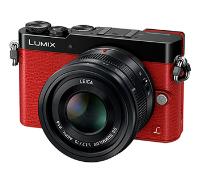 The GM5
The GM5
Panasonic also announced their latest mirrorless, interchangeable lens offering, the GM5. The tech specs aren’t all that different to the LX100, but it can shoot at an amazing 1/1600th of a second, which makes lightening look slow. I should mention too that both the LX100 and the GM5 shoot full HD video. Neither camera has a pop-up flash, but instead ship with a hot-shoe flash, which you might never even need given the high-ISO capabilities.
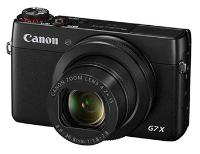 Canon Powershot G7 X
Canon Powershot G7 X
One of Canon’s major announcements was the new Powershot G7 X. Like Pansonic’s LX100, this is a premium compact camera, with a decent sized 1-inch sensor. The specs are very similar to Sony’s RX100, but it doesn’t have an electroniv viewfinder that you can put your eye to. It does however have a tiltable touchscreen, which in my experience is a really useful feature.
Nikon D750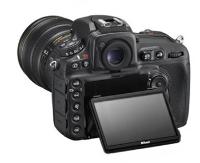
One of the big DSLR announcements was Nikon’s full-frame D750, which I looked at last week. The D750 is the first full-frame DSLRs that comes with Wifi capabilities to allow you to instantly download and share your images. It has lots of features to interest videographers, including the tiltable LCD screen. The D750 is also one of the best performing DSLRs in terms of battery life, which may not be a headline-grabbing feature but is a pretty big deal nonetheless.
 The NX1
The NX1
Samsung has really attempted to forge it’s own path in the mirrorless camera segment with the NX1 that it announced at Photokina. In terms of look and feel, the design is more reminiscent of a DSLR, with a nice big hand grip, but it is noticeably slimmer. It comes with an 28MP APS-C sized sensor which has Back Side Illumination, which should produce excellent results in low light. The maximum ISO is a 25,600 and it will be really interesting to see how images shot at this setting will look. The NX1 has autofocus capabilities far beyond those of any DSLR; it has hybrid system with 209 contrast-detect and 205 phase-detect points covering 90% of the frame. This should offer some pretty impressive AF performance. It’s capable of shooting a blistering 15 frames per second, and up to 70 jpegs continuously. It has a dust and splash-resistant magnesium-alloy body which Samsung describes as ‘light and super strong’. The Electronic viewfinder has a whooping 2.36 million dots, and a lag slow small that it’s basically real time.
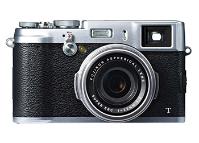 The X100T and X30 from Fujifilm
The X100T and X30 from Fujifilm
Fujifilm has been one of the big success stories of the mirrorless era, and at Photokina this year they announced two new models; the X100T and the X30. It carries the excellent X-Trans APS-C sensor and a 23mm f/2 fixed lens. It offers new manual focussing options with the Advanced Hybrid Viewfinder and the Electronic Viewfinder, and also a new film simulation called ‘Classic Chrome’. An electronic shutter mode has been added which allows you to shoot silently and at a blinding 1/32000th of a second. The exposure compensation dial now has an extra stop in either direction, offering +/-3EV. Customizability of the function buttons has been extended, and users can now choose their own operation prefernce for seven different buttons
 The X30
The X30
The X30 is an upgrade of the X20 and has some noticeable improvements. It comes with an electronic viewfinder, and a tiltable screen. It has Wifi capabilities which allow you to download images to your smart device, and you can also control the camera from your smart device. Importantly, the battery life of the X30 is nearly double that of the X20. Read more about the X30 here.
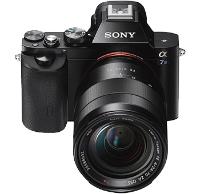 The Sony A7S
The Sony A7S
The A7S is the third camera in the A7 range, which broke new ground as the first full-frame mirrorless camera. The A7S is a camera with near-legendary high-ISO performance: it can shoot at ISO 409,600. That is simply astronomical and means that you can shoot videos by moonlight.
So it was another year of exciting announcements at Photokina 2014. This event really has become the bellwether for the photography industry, and tells those of us who love to have our fingers on the pulse where we stand and where we’re headed.
So what do you think – see anything in there you like?



